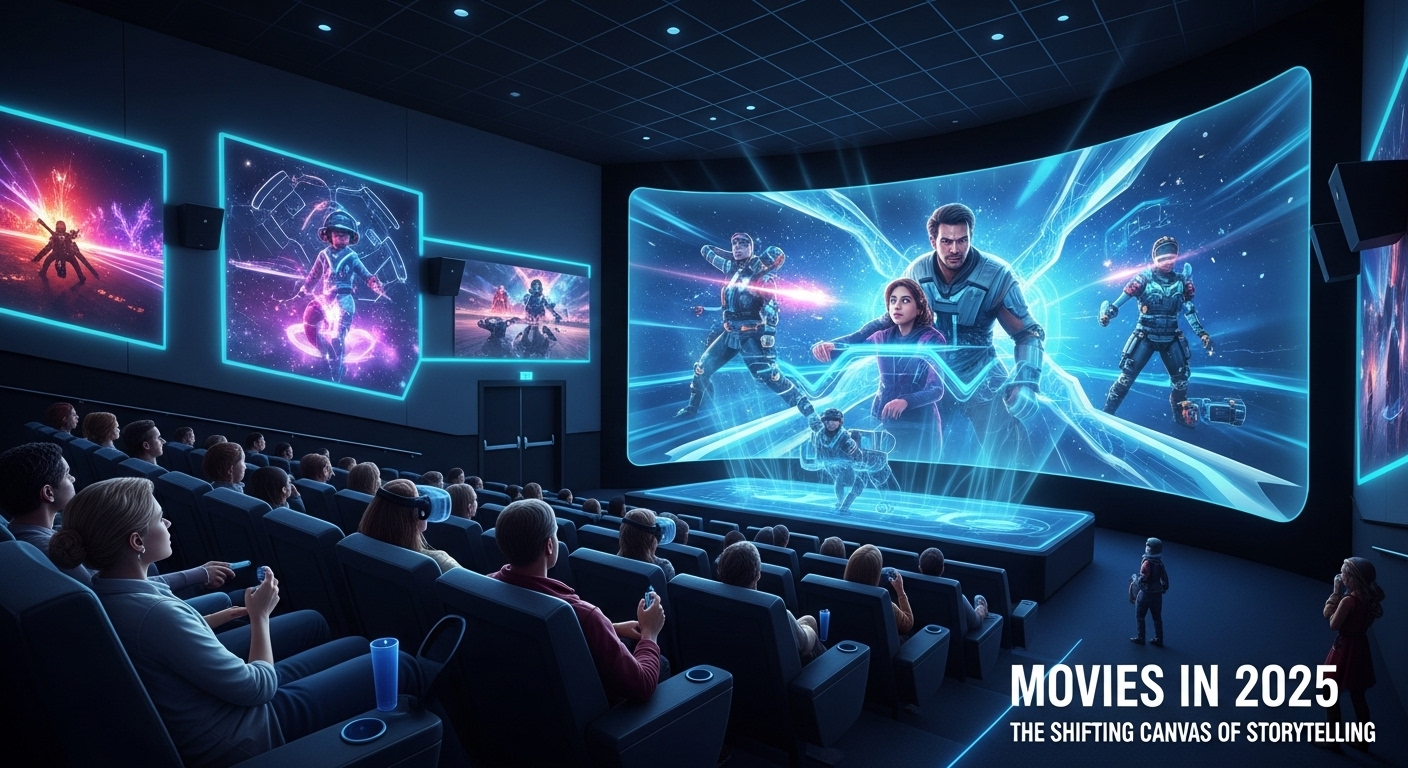For well over a century, “movies” have held an unparalleled grip on the human imagination. From the flickering shadows of early silent films to the breathtaking clarity of today’s hyper-realistic blockbusters, cinema is more than just a form of entertainment; it’s a powerful medium for storytelling, a mirror reflecting society’s dreams and anxieties, and a universal language that transcends cultural barriers. As of mid-2025, the film industry is navigating a thrilling, yet complex, transformation driven by technological leaps, evolving audience habits, and a renewed emphasis on diverse narratives.
The Art of Storytelling: A Diverse, Blending Landscape
At its heart, a movie is a sequence of images (and sound) that creates the illusion of movement, designed to tell a story or convey an experience. The world of cinema is incredibly diverse, with genres constantly blending to create rich, complex cinematic experiences:
- Action: High-octane thrillers with chases, fights, and explosions (e.g., the anticipated Afterburn, Nobody 2).
- Adventure: Epic journeys to exotic locales (e.g., Avatar series, The Fantastic Four: First Steps).
- Comedy: Designed to evoke laughter, from slapstick to witty satire (e.g., Happy Gilmore 2).
- Drama: Explores complex human emotions and relationships, often with high stakes (e.g., Oppenheimer).
- Fantasy: Immersive worlds of magic and mythical creatures.
- Horror: Crafted to frighten and thrill audiences with suspense and terror (e.g., The Monkey, The Strangers Chapter 2).
- Musicals: Stories told through song and dance (e.g., Wicked).
- Mystery/Thriller: Focus on suspense, intrigue, and unraveling secrets (e.g., Black Bag).
- Science Fiction: Explores speculative concepts, often set in the future or alternate realities (e.g., Mickey 17, Tron: Ares, Project Hail Mary).
- Animation: Bringing drawings, CGI, or stop-motion to life (e.g., Inside Out 2, The Bad Guys 2, Dog Man).
- Documentary: Non-fiction films presenting real events and information.
A Century of Cinematic Evolution: From Studios to Streamers
The journey of movies began in the late 19th century with pioneers who projected short films. The early 20th century saw the rise of silent films, then the advent of “talkies” in the late 1920s, which revolutionized the industry and ushered in Hollywood’s “Golden Age.” Post-World War II, cinema adapted to challenges from television by introducing widescreen formats and color. The 1970s and 80s saw the rise of blockbusters that reshaped the theatrical experience, while the late 20th century celebrated the emergence of independent cinema, diversifying storytelling voices.
The Digital Revolution and the Future of Movies in 2025
Technology continues to profoundly reshape every aspect of filmmaking and consumption:
- Virtual Production and AI-Enhanced Visuals: Virtual production, powered by LED walls and real-time rendering technology (often utilizing video game engines like Unreal Engine), is transforming how sets are built and scenes are shot. This reduces travel and location costs, speeds up production timelines, and offers immense creative control over lighting and visuals. AI is becoming integral to pre-production (e.g., script development, location scouting, storyboarding), enhancing visual effects with automated rendering (e.g., RunwayML), and streamlining editing workflows. AI can also create digital clones of actors and dub voices, raising ethical discussions but also offering immense efficiency. While AI is poised to handle more technical workloads, the industry acknowledges that human creativity remains at the core of great storytelling.
- Streaming Dominance and Hybrid Release Strategies: Streaming platforms (Netflix, Amazon Prime Video, Disney+, etc.) have fundamentally altered content distribution. They heavily invest in original content and offer on-demand viewing, impacting traditional cinema attendance. Hybrid release models, combining theatrical and digital premieres, are becoming common strategies to maximize audience reach and revenue. The market for Over-The-Top (OTT) content is expanding rapidly, with mergers and acquisitions among streaming platforms to streamline operations and offer curated content.
- Immersive Viewing Experiences: The future of cinema is increasingly leaning towards more immersive experiences. Virtual Reality (VR) and Augmented Reality (AR) are poised to offer audiences the chance to step into narratives, blurring the line between viewer and participant. Advances in sound design, particularly spatial audio, are redefining how audiences experience films, creating greater depth and precision. Premium Large Format (PLF) cinemas continue to grow, offering enhanced visual and auditory experiences.
- Content Personalization and Niche Audiences: AI algorithms are becoming highly sophisticated at analyzing viewing habits and preferences, enabling platforms to offer micro-targeted content recommendations. This leads to the creation of content for “niche audiences and micro-moments,” fostering deeply engaged communities and ensuring content resonates more effectively with specific segments of the global audience.
- Focus on Sustainability: Environmental consciousness is a major priority. Studios are implementing greener production practices, including minimizing on-set waste, utilizing renewable energy, and adopting virtual production to reduce the need for extensive physical sets and travel-related emissions. This aligns with broader societal trends towards environmental responsibility.
- Global Collaboration and Diverse Storytelling: Streaming platforms have fueled a demand for content that appeals to global audiences, driving cross-border collaborations and co-productions. This leads to a blending of storytelling styles and cultural influences, and an increased focus on diverse and inclusive narratives that explore unique cultural perspectives and experiences, reaching wider demographics.
Anticipated Releases in 2025-2026: A Glimpse Ahead
The cinematic calendar for 2025-2026 is packed with highly anticipated films across various genres, reflecting current industry trends:
- Major Franchises & Universes: Captain America: Brave New World, Thunderbolts*, The Mandalorian and Grogu, Jurassic World Rebirth, Mission: Impossible – The Final Reckoning, The Bad Guys 2, Paddington in Peru, Moana (live-action), How to Train Your Dragon (live-action), Toy Story 5 (2026), Avengers: Doomsday (2026), and Superman (2025).
- Originals & Diverse Stories: Mickey 17 (Bong Joon Ho’s sci-fi), Black Bag (Steven Soderbergh thriller), Eden, The Running Man, Project Hail Mary, The Odyssey.
- Horror & Thrillers: Wolf Man, The Monkey, 28 Years Later, Heart Eyes.
- Comedies: The Naked Gun (remake), Happy Gilmore 2.
While the rise of streaming services has presented significant challenges to traditional cinema attendance globally, the communal magic of watching a film on a large screen with a shared audience remains a powerful draw. The film industry is adapting by focusing on premium, eventized theatrical releases and continually enhancing the cinema experience itself. Movies continue to be a vital part of our cultural fabric, endlessly innovating in their storytelling and technological delivery, and shaping our understanding of the world.

